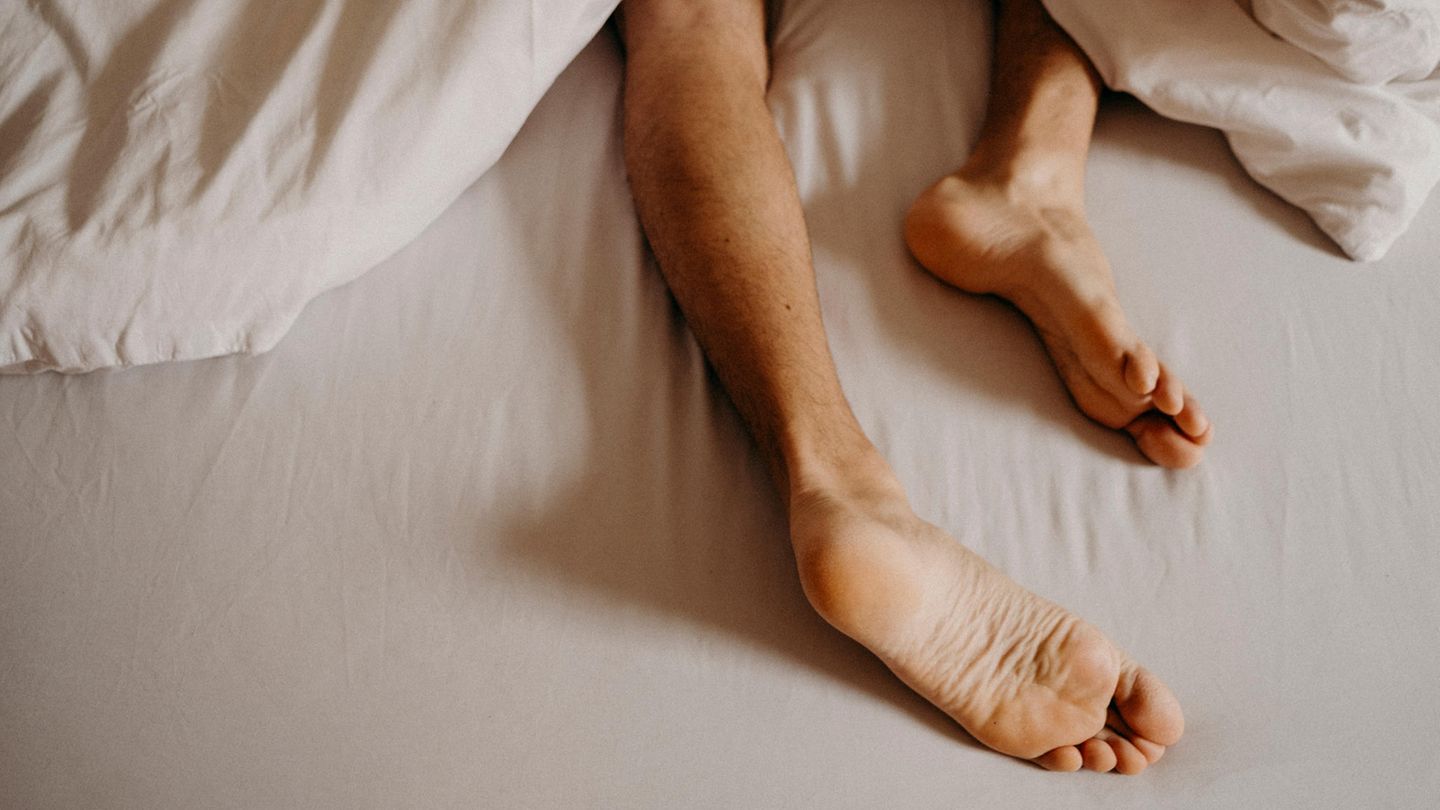Good to know
Messiness wins! Why making the bed is a bad idea
Copy the current link
For many people, a made bed is part of a tidy apartment. The bedspread is also often standard. A stupid idea. Hygienically, this is a disaster.
Make the bed or leave it? What for some people is part of the morning routine because you want to have everything neat and tidy at home, for others it is above all one thing – unnecessary. Finally, a few hours later, sheets and the like are rumpled again. And so the mother argues with the teenage child and the bachelor argues with the raging dog about which bed condition is socially acceptable and which is not. However, one argument is all too often neglected in such discussions: the fact is that a burrowing bed is more hygienic. Don’t you believe? But it is true!
Saliva, tears, sweating, wetting, nosebleeds – people continually excrete fluid, even at night. About one liter ends up in bed per person per night. Coupled with darkness and the warmth that exists under the blanket, a wetland is created that is an optimal breeding ground for bacteria, fungi and vermin.
Researchers at the University of Manchester, among others, have proven how unhygienic bedding can be. They examined synthetic and feather pillows that had been used for between one and a half and 20 years for possible fungal contamination. It turned out that pillows are a real paradise for fungi. Between 4 and 16 different species of fungi were discovered on each pillow.
Mites love the moist warmth of beds
Unventilated ceilings also serve as a popular breeding ground for blood-sucking parasites. Mites are less than a millimeter in size and cannot be seen with the naked eye. They feed on human skin flakes and hair.
British researchers from Winston University in London have found that there are around 1.5 million such arachnids in one bed. In a humorous article on this topic published by Canadian doctors Robert Patterson and Christopher Steward-Patterson in the Canadian Medical Association Journal (CMAJ), it is presented more clearly: “In fact, half the weight of a person can be carried “The down-filled duvet is made of dead dust mites and their tiny droppings.”
The small animal zoo in bed is not only unhygienic, it can also cause illnesses such as house dust allergy and asthma, as we breathe in the allergens produced by mites, among other things, while we sleep. So-called bedmaker’s lung is particularly common among chambermaids. A disease caused by repeated exposure to dust mite feces. You could also say: by making your bed regularly. It is a form of allergic alveolitis, an inflammation in and around the tiny alveoli and the smallest airways in the lungs.
A hygienic bed requires lots of fresh air
In their article, Robert Patterson and Christopher Steward-Patterson recommend saving yourself the work and leaving the bed rumpled. And with a wink: “Time saved: 5 minutes for the task, which is preceded by 10 minutes of argument about whose turn it is to make the bed. That, multiplied by 365 days a year with an average life expectancy of 78 years, equals more overall than 9 months or almost 1 percent of our lifetime.”
If you clean your bed immediately after getting up and, in the worst case, drape a bedspread over it, you ensure that the bedding does not have the opportunity to air properly. Moisture and warmth are also retained for longer, to the delight of mites etc. It is also poisonous to good air circulation if the area under the bed is cluttered, for example in the form of a bed box. How to escape all this? The best remedy for mites is fresh air. The less moisture there is, the less hospitable it becomes for mites.
It is recommended to fold the duvet back in the morning. It’s even better if you let the bedding air out in the fresh air. Many people only know the hanging-out-of-the-window method from old folkloric home movies, but it is considered particularly effective. But even all ventilation can only do little if the bedding is not washed regularly. The rule of thumb is: change the bedding once a week and wash it at at least 60 degrees. It’s best to let the mattress air out for a few hours before re-covering.
Further texts from the “Good to know” series
Source: Stern
I’m Caroline, a journalist and author for 24 Hours Worlds. I specialize in health-related news and stories, bringing real-world impact to readers across the globe. With my experience in journalism and writing in both print and online formats, I strive to provide reliable information that resonates with audiences from all walks of life.





